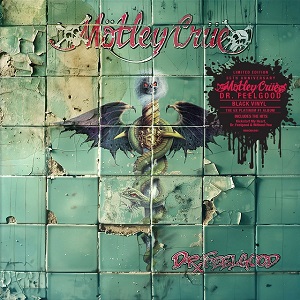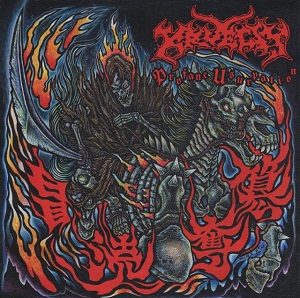MARTY FRIEDMAN - "I Play Metal Music, But There Is So Much Outside Influence And It's Mostly Not Metal"
March 14, 2021, 3 years ago

During a conversation with Ultimate Guitar's Justin Beckner, former Megadeth guitarist Marty Friedman talked about gear, the Japanese gear scene, his first guitar, and more. Following is an excerpt from the interview.
UG: A lot of the people reading this are likely metal-centric musicians in the Western world. What can we learn from learning to play Eastern styles of music?
Friedman: "What worked for me - and what I suggest for people of all genres - is to only work on things that appeal to you in some way. Only work on things that when you hear it, you feel like it's something you'd like to have as part of your own music.
When you hear something and you like it and something about it hits you...
A lot of times, especially with younger musicians, someone will say, 'If you're a guitar player, you have to learn about this guy,' or, 'If you're an acoustic guitar player, you can't go on without learning these Al Di Meola songs.' There is always going to be some guitar teacher that will suggest something because it's good. There is nothing wrong with that. But at some point, you're really going to have to decide for yourself what speaks to you and stay busy analyzing that stuff.
"You might be at an Indian restaurant and there will be music playing in the background and you'll hear some motif that will be so cool to you. No one else will notice it, but you'll think, 'Oh my god! What's going on?' Then you'll go find out whatever the hell that thing is and analyze it at home. That's your responsibility, as a musician, to pick those little pieces out of everyday life, that speak to you, and analyze those things.
If you want to be a better funk player, you listen to a bunch of funk songs, that's OK, but if you find the things within that music or any kind of music that speaks to you, that's one step closer to developing your own identity as a musician, as an artist, and as a guitar player.
"The sooner you get attuned to what you like and the sooner you start analyzing those things and learning it, that's what I suggest to do, regardless of what style you want to learn. Not just Japanese music, but any music that you hear, because you can make that fit into whatever genre you play.
I play, pretty much, metal music, but there is so much outside influence in there, and it's mostly not metal, but I like to play with a lot of distortion and powerful drums and stuff, so it sounds like metal. But when you break it down, there are a lot of things that come from other places."
Read more here.
Marty Friedman will release the new studio album Tokyo Jukebox 3 via The Players Club / Mascot Label Group on April 16. Pre-order here.
The record is the third in a series that began with Tokyo Jukebox in 2009, and then Tokyo Jukebox 2 following in 2011.
The trilogy presents Friedman’s inspired performances to Japanese repertoire he’s chosen to cover. He shares, "I've been playing stuff from the first two 'Jukebox' albums live all over the world, and it's taken on a life of its own. Especially in places like North and South America, Australia, Italy, France and even India. My fan base is very dedicated, and what I have found is that lots of new fans have been introduced to Japanese music and culture through me, which is very gratifying. On the tours it seems like aside from the dedicated guitar fans, the Japan fanatics have been noticeably growing, so now felt like the right time to do Tokyo Jukebox 3."
"I feel so incredibly fortunate and grateful for the love and support of wonderful people from so many countries and cultures around The World. With this video, I tried my best to share that unique feeling with you, and what better way than to have those cool folks jam for us. A huge thank you to everyone who took the time and energy to learn this song and make this video so fun to look at.”
Friedman put a lot of energy into selecting the right songs to cover for the album, He shares, “In Japan, you have to get permission to record and release cover versions, and that can be a very tricky and long process. So, the last thing I wanted to do was to ask permission to do a song, only to wind up not recording it for whatever reason. That would be very impolite. I spent several weeks choosing songs and demoing them to see whether I could create versions that I could get pumped up about, before I even approached any publishers. I came up with a short list of 20 songs, and from this chose about 15 that I knew I could really score with.”
Friedman has also included “The Perfect World,” which he wrote, recorded and originally released in 2018. This is the only track on the album with vocals. He reflects, “Back then I did the song with Jean-Ken Johnny from Man With A Mission on vocals, and that was used as the main theme for the Netflix series B: The Beginning. On the day of release, the song went straight to the top of the Japanese iTunes chart.” This recording is a new, fresh interpretation with Alfakyun, one of Japan’s premier female J-Pop singers performing the vocals. As Friedman offers, “It's really a self-cover, so it fits in with the idea of this being a covers album.”
Friedman has also included “Japan Heritage Theme Song,” another of his own compositions on which he worked with the Tokyo Philharmonic orchestra. He reflects, “I was asked by the Japanese government to compose an official song to be played at government sponsored events which celebrate Japanese heritage. This was a huge honor, and it was wonderful to be able to work with such a prestigious orchestra which, rather conveniently, my wife plays cello in. Doing this was a little different from what I am used to, because instead of playing a completed track to record company people I had to face Japanese government officials. I recall looking at their stony faces after they heard it and sweating anxiously awaiting their reaction. Thankfully, they liked what I'd done. I felt this was a great, uplifting way to close the album.”
Much of the recording process was done at Power House Studios in Tokyo, with Friedman, who was also the producer on the project, joined by bassist Kiyoshi and drummer Anup Sastry. He shares, “Kiyoshi has been in my band for about six years now doing all my tours and recordings. She is a powerhouse, and I honestly have never seen anyone hit the bass as hard as she does, especially while keeping up with my kind of challenging music. Anup was a member of Skyharbor (an Indian/American progressive metal band) and has been on my last three albums. He is just plain phenomenal as well.”
The recording process started in January, 2020 and was due to end in March with a release in May. Then the pandemic struck, and everything was pushed back. Friedman had no firm deadline to finish the album within, and he took advantage of the time, reflecting on executing his vision without limitations. He offers, “I kept reworking the music, and improving everything. In the end it took several months to get the album completed, but it was time well spent. I believe the music turned out so much better because I wasn't under any deadline pressure.” The mixing was handled by Jens Bogren at his own Fascination Studios in Sweden. He's a resource Friedman has the utmost confidence in offering, “Jens has mixed my last three albums and he’s one of the best in the business. He knows what I want, and I know he'll get it for me.”
Friedman's remarkable attention to detail on this album goes beyond the music. The cover image presents the guitarist dressed in a traditional Japanese kimono, with make-up that honors authentic tradition. He offers, “I have to admit that getting this done was a hellish process. It could easily have just looked like a dude in drag and therefore rather stupid. It does take a very serious attitude and approach to pull this off properly. If you look at the covers for the first two 'Jukebox' albums, I had on kabuki make-up. There was no photoshop used at all and that’s precisely why they came out so well. This time I brought on the absolute top professionals in the unique field of wardrobe and make-up, and I believe we've hit the bullseye. I am actually wearing two kimonos in the photo, as well as padding to fill me out a little like a sumo wrestler. You'd never believe I am this skinny rock dude from the East Coast of America!”

Tracklisting:
"Makenaide"
"Senbonzakura"
"Gurenge"
"Kaze Ga Fuiteiru"
"Echo"
"The Perfect World" (feat. Alfakyun)
"U.S.A."
"Shukumei"
"Ikuze Kaitou-Shoujo"
"Sazanka"
"Time Goes By"
"Japan Heritage Official Theme Song"
"Makenaide"
"The Perfect World"











